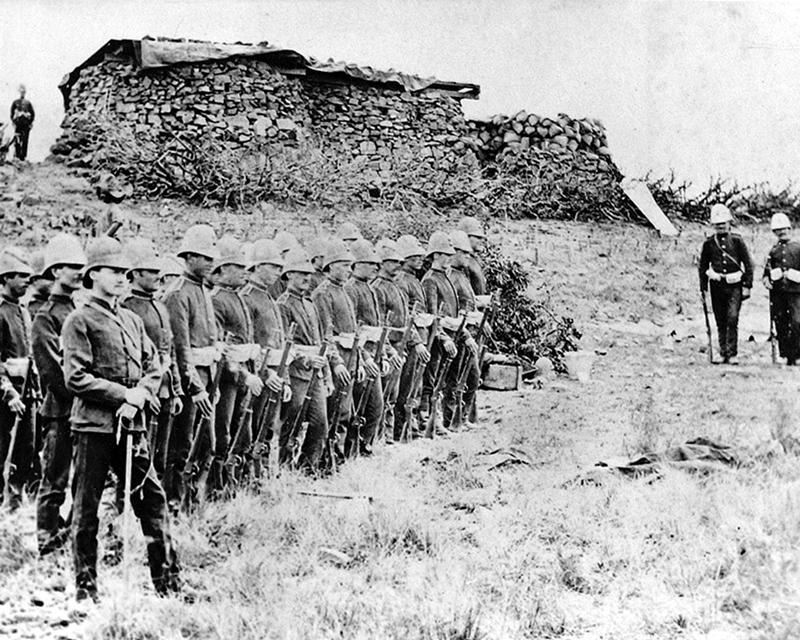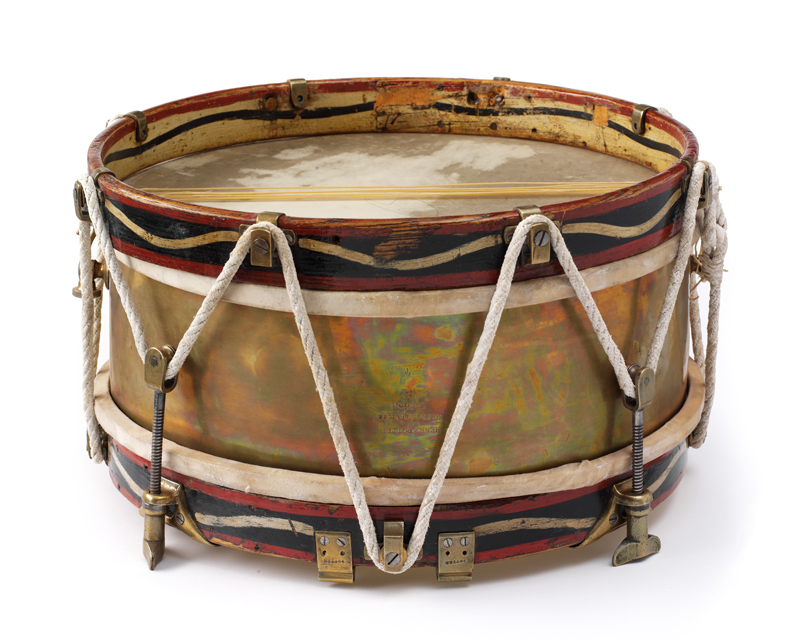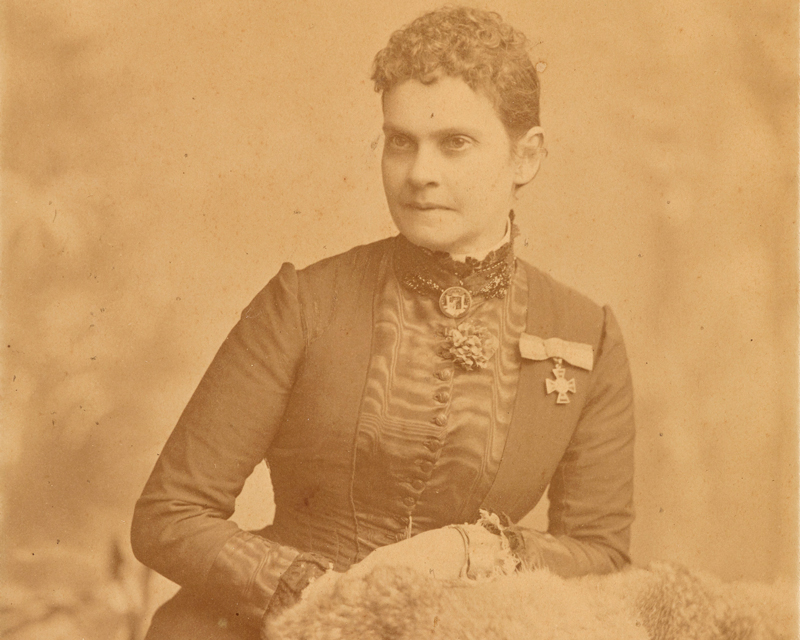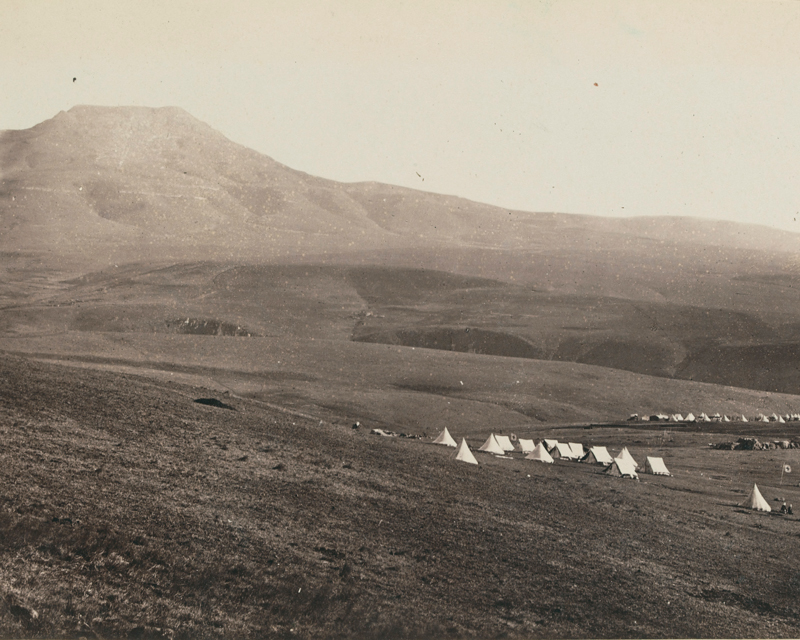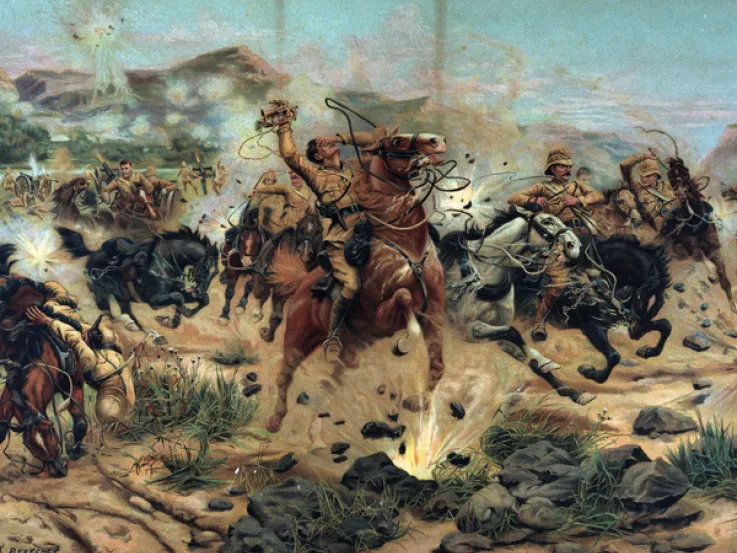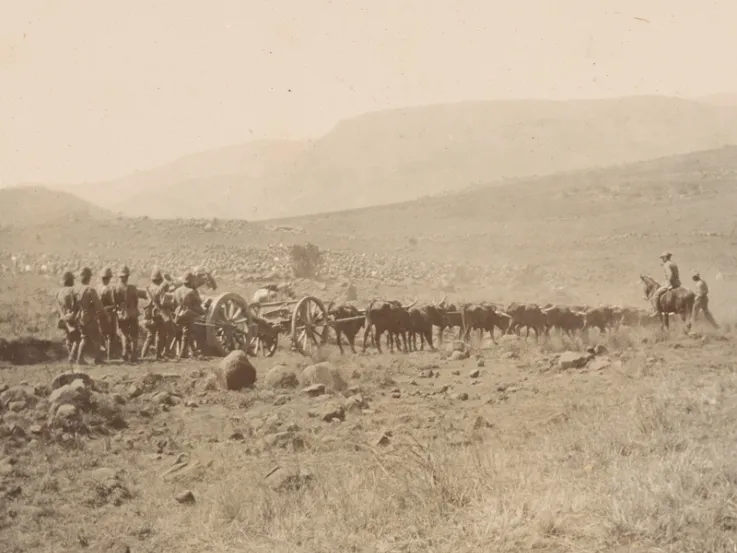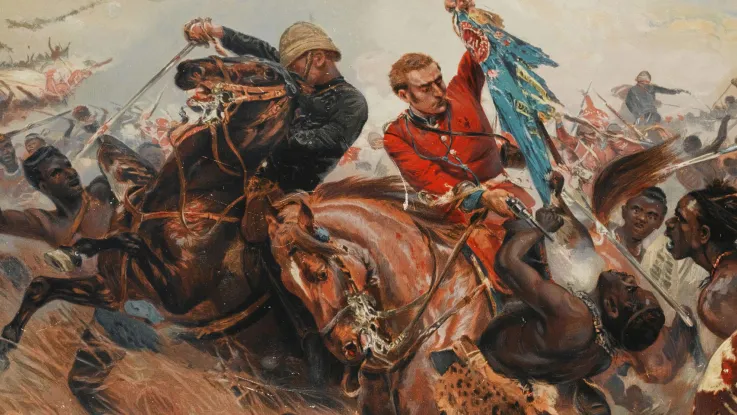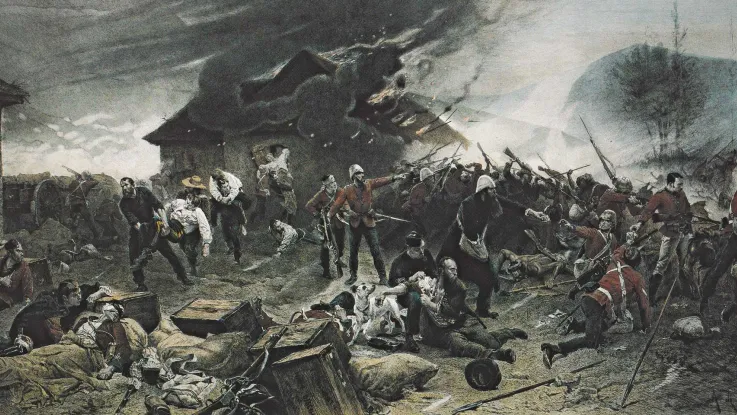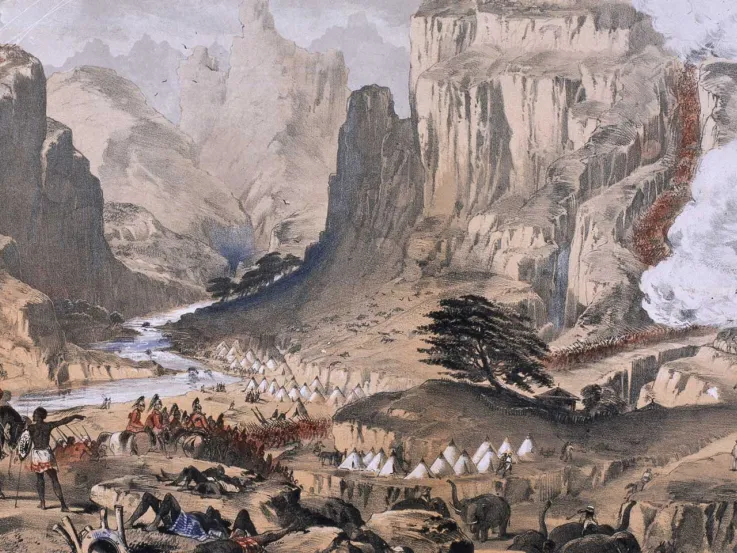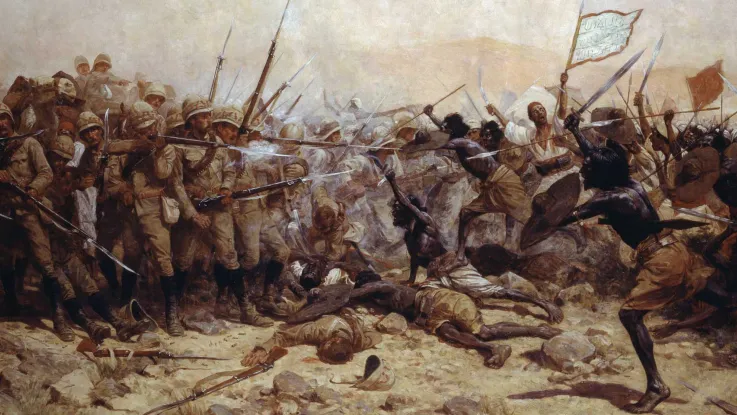Confederation
In 1877, Lord Carnarvon, Secretary of State for the Colonies, wanted to extend British imperial influence in South Africa by creating a federation of British colonies and Boer territories. The Boers of the Transvaal, which was also known as the South African Republic, opposed this.
In April of that year, the British annexed the Transvaal (now Gauteng, Mpumalanga and Limpopo provinces) arguing that this would create stability in the region. The annexation followed military conflict between the Transvaal Boers and the Pedi (or Bapedi) people of the eastern Transvaal, led by King Sekhukhune (or Sekukuni).
The British also claimed this federation would foster economic growth, including development of the Transvaal’s diamond deposits. But the Boers resented British control.
Outbreak
On 13 December 1880, around 4,000 Boers proclaimed the re-constitution of the South African Republic and appointed a provisional government. The Boers then immediately besieged the scattered British forts across the Transvaal.
The British commander, Major-General Sir George Pomeroy-Colley, gathered a force to relieve the surrounded forts. However, he completely underestimated his well-armed Boer opponents, most of whom were highly skilled marksmen and adept at using cover. A series of British defeats soon ensued.
‘The men who follow you are, many of them ignorant, and know and understand little of anything outside their own country. But you, who are well educated and have travelled, cannot but be aware how hopeless is the struggle you have embarked upon, and how little any accidental success gained can affect the ultimate result.’Major-General Sir George Pomeroy-Colley to Commandant-General Piet Joubert — 23 January 1881
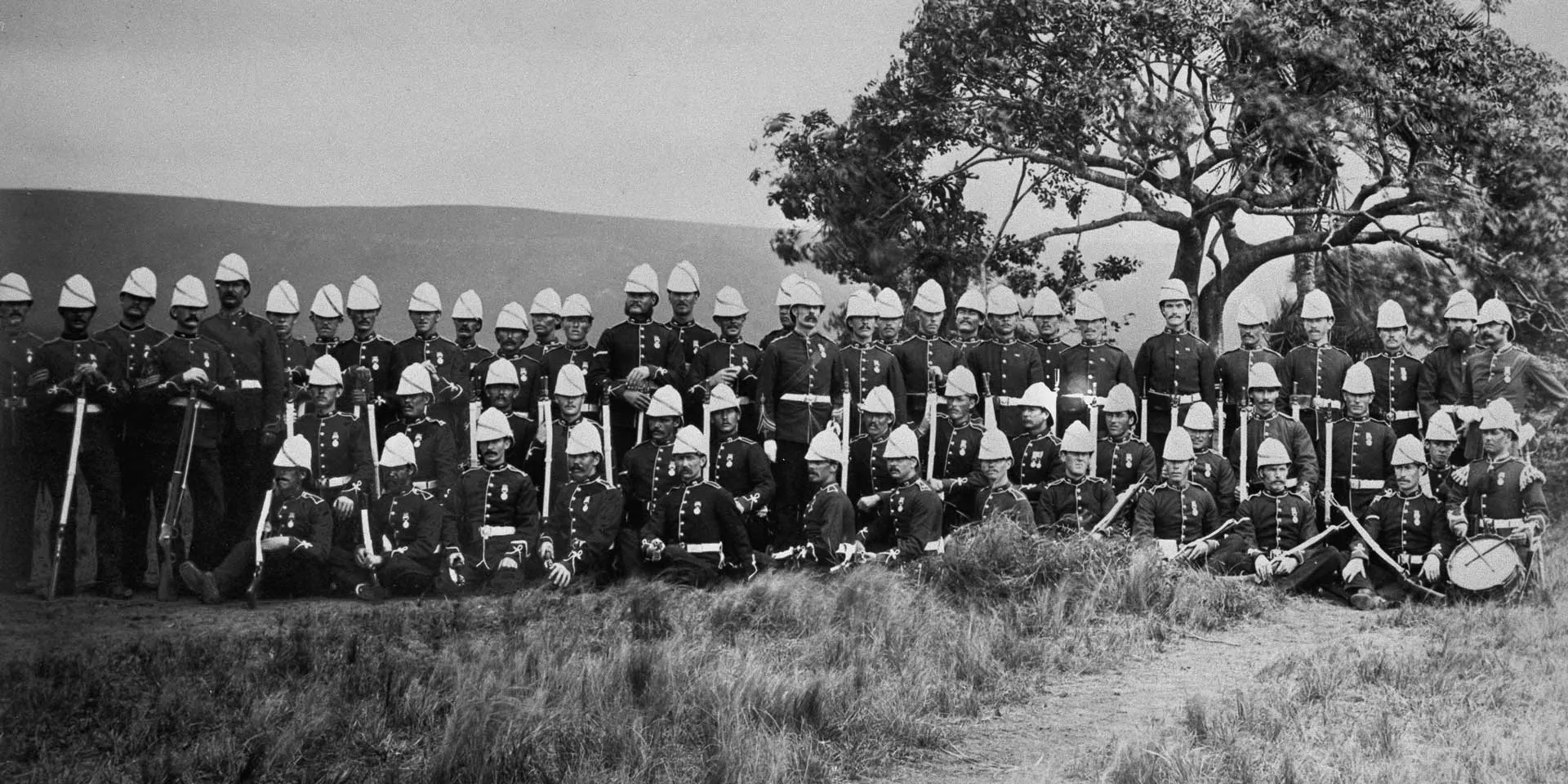
Troops of the 94th Regiment in the Transvaal, 1881
Bronkhorstspruit
On 20 December 1880, at Bronkhorstspruit, Lieutenant-Colonel Philip Anstruther and a column of 260 men from the 94th Regiment were halted by around 200 Boers while marching from Lydenburg towards Pretoria. The families of several British soldiers accompanied the column.
Commandant Frans Joubert ordered Anstruther to turn back, stating that the local territory was once again a Boer republic. Any further advance would be deemed an act of war.
Anstruther refused and ordered that ammunition be distributed. The Boers opened fire and 56 men from the 94th were quickly killed and nearly 100 wounded. Among them was Anstruther, who ordered a surrender before succumbing to his injuries.
Laing’s Nek
In January 1881, Colley led around 1,500 men, with artillery and Gatling guns, to a strategic pass on the Natal-Transvaal border called Laing’s Nek.
On 28 January, Colley attempted a frontal attack to break through the Boer positions but was beaten back by Commandant-General Piet Joubert’s sharpshooters. Of the 480 British troops who made the assault, 150 were killed. Laing's Nek was the last time that Colours were carried into battle (by the 58th Regiment).
Afterwards, Colley retreated to his camp at Mount Prospect to await reinforcement. On 7 February, he had to march southwards to repel a 300-strong Boer force that was threatening his communications with Natal. Despite forcing them back, Colley’s men suffered heavy casualties from Boer sniping.
Majuba Hill
Hostilities were briefly halted as diplomatic negotiations between the Boers and the British colonial government got under way. But Colley, now reinforced with additional troops, decided to act anyway.
On the night of 26 February 1881, he led a force to occupy the heights of Majuba Hill, which overlooked the nearby Boer positions around Laing’s Nek. His force did not bring any artillery, so could only observe the Boer positions as they were out of rifle range.
The next day, the Boers began their ascent. Their accurate shooting soon decimated the defenders, some of whom broke and fled down the hill. On the British side, 285 soldiers were killed or wounded. Colley, shot while attempting to rally his men, was among the dead. Boer losses were only two dead and four wounded.
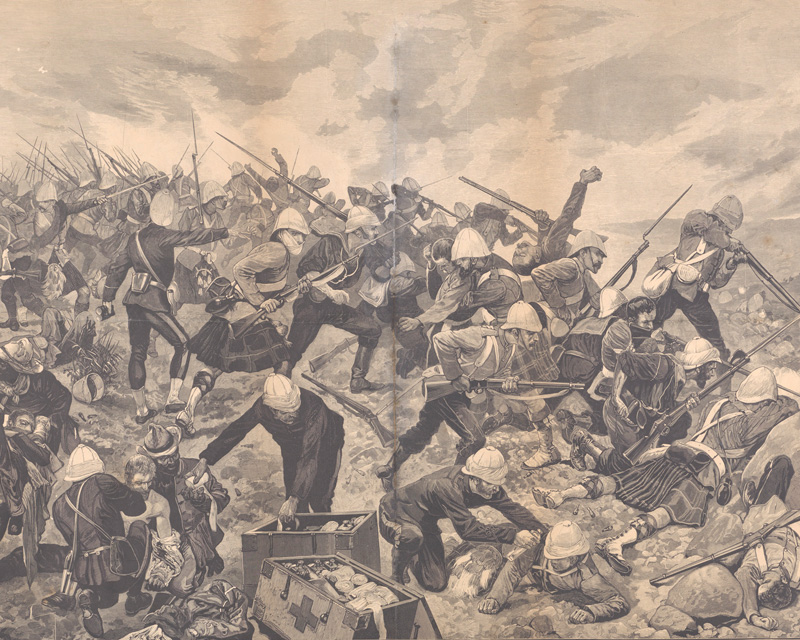
The Battle of Majuba Hill, February 1881
Peace
Meanwhile, the British forts at Pretoria, Marabastadt, Lydenburg, Rustenburg, Wakkerstroom and Standerton had held out against their Boer besiegers despite suffering losses from sniping. Only Potchefstroom surrendered after being starved out by the Boers.
Although the British had sent General Sir Frederick Roberts and reinforcements to South Africa, they were reluctant to continue a conflict that could be costly, messy and protracted. Also, the conciliatory tone adopted by the Boer negotiators made a settlement possible.
Major-General Sir Evelyn Wood (Colley's replacement) signed an armistice on 6 March 1881. Subsequently, a peace treaty was signed on 23 March, officially ending the war.
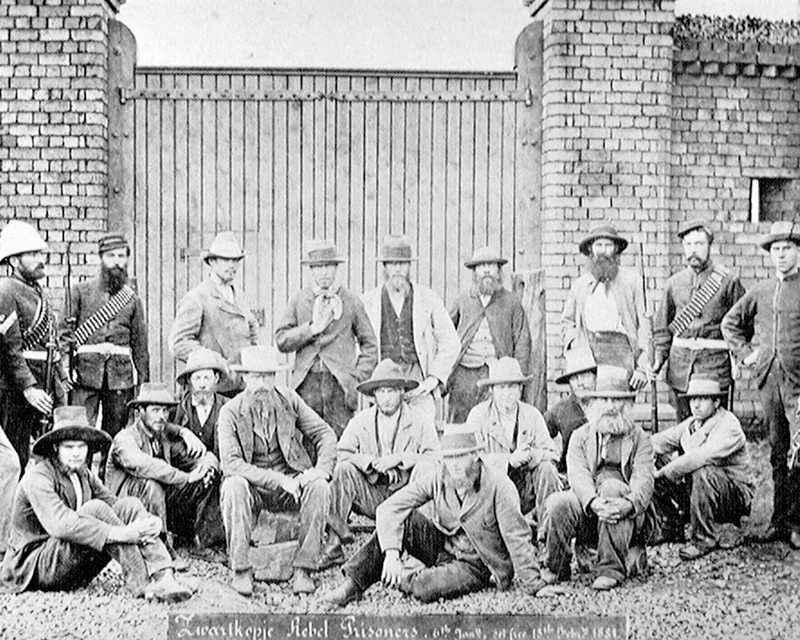
Boer prisoners captured in the Transvaal, 1881
Aftermath
Although the Transvaal regained its independence, Britain retained control of its foreign relations. A British Resident was also installed in Pretoria to supervise the interests of the black African population.
Three years later, further diplomatic negotiations saw these two strictures removed and full independence achieved. However, disputes between the two sides continued.
British supporters of imperial confederation carried on pushing for greater influence in the Transvaal. The discovery of gold there in 1886 raised the tension further. This all culminated in the outbreak of the Boer War in 1899.


